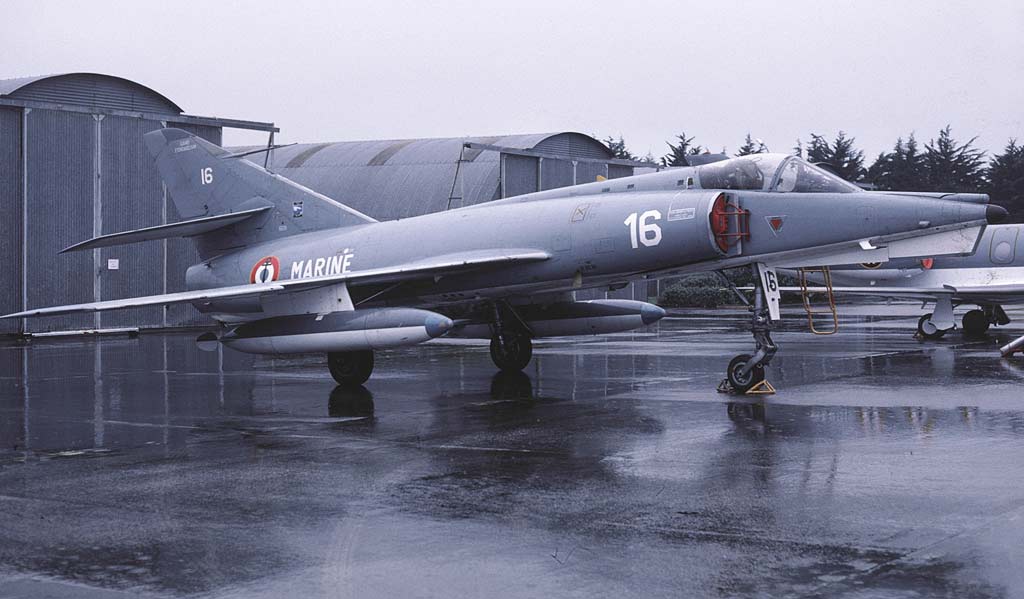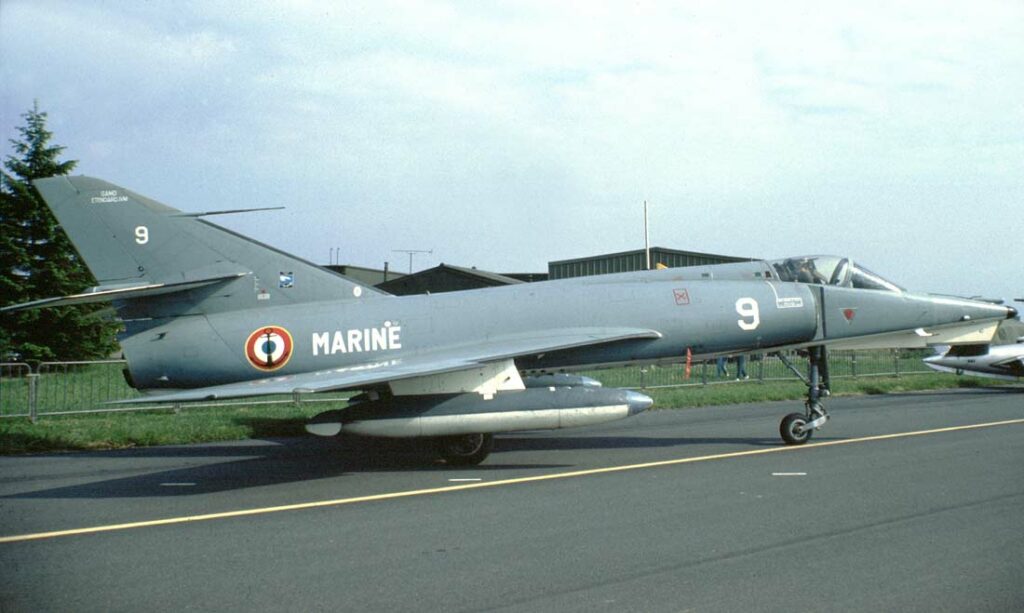The Étendard IV, a French Navy carrier-based strike fighter, made its mark in the Cold War era.
In Brief
The Dassault Étendard IV is a single-engine, carrier-based strike fighter aircraft developed in France during the late 1950s. Designed to meet the French Navy’s requirements for a versatile, supersonic jet capable of performing ground-attack, reconnaissance, and air-defense missions, it featured a low-wing monoplane design with a distinctive swept wing. Powered by a single SNECMA Atar 8B turbojet engine, the Étendard IV could reach speeds of up to Mach 1.3. Its armament included two 30 mm DEFA cannons, and it was capable of carrying a variety of ordnance, including bombs, rockets, and later, air-to-ground missiles. Over its service life, the Étendard IV demonstrated flexibility and reliability across numerous maritime and land-based operations.

History of the Development of the Dassault Étendard IV
In the context of the Cold War’s escalating demands for advanced military technology, France sought to enhance its naval air power with a capable, modern fighter aircraft. This ambition led to the development of the Dassault Étendard IV, designed to fulfill a range of roles including reconnaissance, strike, and air defense for the French Navy. The program was initiated following the French government’s request for a versatile aircraft that could operate from the country’s aircraft carriers, thereby extending the naval force’s operational capabilities.
Launched by Dassault Aviation in the late 1950s, the Étendard IV project aimed to create a jet that could meet the diverse demands of carrier-based operations, including the ability to launch and recover from the limited deck space of naval vessels. The aircraft’s first flight occurred on July 21, 1961, marking the beginning of a successful testing and evaluation phase that would lead to its adoption by the French Navy.
The Étendard IV did not receive a specific NATO nickname, reflecting its primary service within the French armed forces rather than in broader NATO operations. Its development was motivated by the need for a multirole aircraft that could adapt to the changing dynamics of Cold War confrontations, offering both offensive and defensive capabilities from the sea.
Design of the Dassault Étendard IV
The design of the Étendard IV was characterized by its single-engine layout, swept wings, and tailplane, features that contributed to its supersonic capabilities. The aircraft was equipped with a SNECMA Atar 8B turbojet engine, capable of propelling the Étendard IV to speeds of up to Mach 1.3. It featured a robust landing gear system designed for the harsh conditions of carrier operations, including catapult launches and arrested landings.
One of the main advantages of the Étendard IV was its versatility. It could be quickly reconfigured for various missions, including air-to-surface, reconnaissance, and limited air-to-air combat roles. However, its reliance on a single engine, while simplifying maintenance and operation, limited its payload capacity and range compared to larger, twin-engine counterparts. Despite these drawbacks, the Étendard IV’s design represented a balanced compromise between performance, versatility, and operational requirements.
Performance of the Dassault Étendard IV
The Étendard IV’s performance metrics underscore its role as a multirole fighter. With a maximum speed of Mach 1.3 (approximately 1,000 mph or 1,610 km/h), a service ceiling of over 50,000 feet (15,240 meters), and a range of 1,250 miles (2,010 kilometers), it was capable of executing a variety of mission profiles. Its operational capabilities were enhanced by the aircraft’s ability to carry a range of weaponry, including bombs, rockets, and, in later versions, guided missiles.
When compared to contemporaneous aircraft such as the American A-4 Skyhawk, the Étendard IV offered a comparable blend of speed, agility, and multirole functionality, though it generally carried a smaller payload. Its design and performance characteristics reflected the specific needs of the French Navy, prioritizing operational flexibility and carrier compatibility.
Variants of the Dassault Étendard IV
The Étendard IV saw several variants throughout its service life, including the Étendard IVM (Marine), which was the primary strike and attack version, and the Étendard IVP, a dedicated reconnaissance variant. The IVM featured improvements in avionics and weapons systems over time, while the IVP was equipped with specialized reconnaissance equipment. Each variant was tailored to fulfill specific roles within naval operations, demonstrating the platform’s adaptability.

Military Use and Combat of the Dassault Étendard IV
The Étendard IV’s military service is marked by its versatility and reliability across numerous campaigns. It saw action in various conflicts, including interventions in Africa and the Middle East, where it was used for ground-attack missions, reconnaissance, and limited air superiority roles. The aircraft’s armament included two 30 mm DEFA cannons, along with an array of bombs, rockets, and, eventually, guided missiles for precision strikes.
Despite facing competition from newer aircraft over time, the Étendard IV maintained its relevance through continuous updates and its inherent multirole capabilities. It served alongside aircraft like the American A-4 Skyhawk and the British Sea Harrier, offering a unique combination of capabilities that suited the French Navy’s specific operational requirements. The Étendard IV was eventually phased out in favor of the more advanced Dassault Rafale M, concluding its distinguished service career.
The Dassault Étendard IV embodies the evolution of carrier-based strike fighters during the Cold War and beyond. Its development and operational history highlight the challenges and achievements of naval aviation technology, offering lessons in design, versatility, and adaptability. As a symbol of French naval air power, the Étendard IV’s legacy continues to influence modern aircraft development, demonstrating the enduring value of innovative engineering and strategic versatility.
Back to the Fighter Jet section.